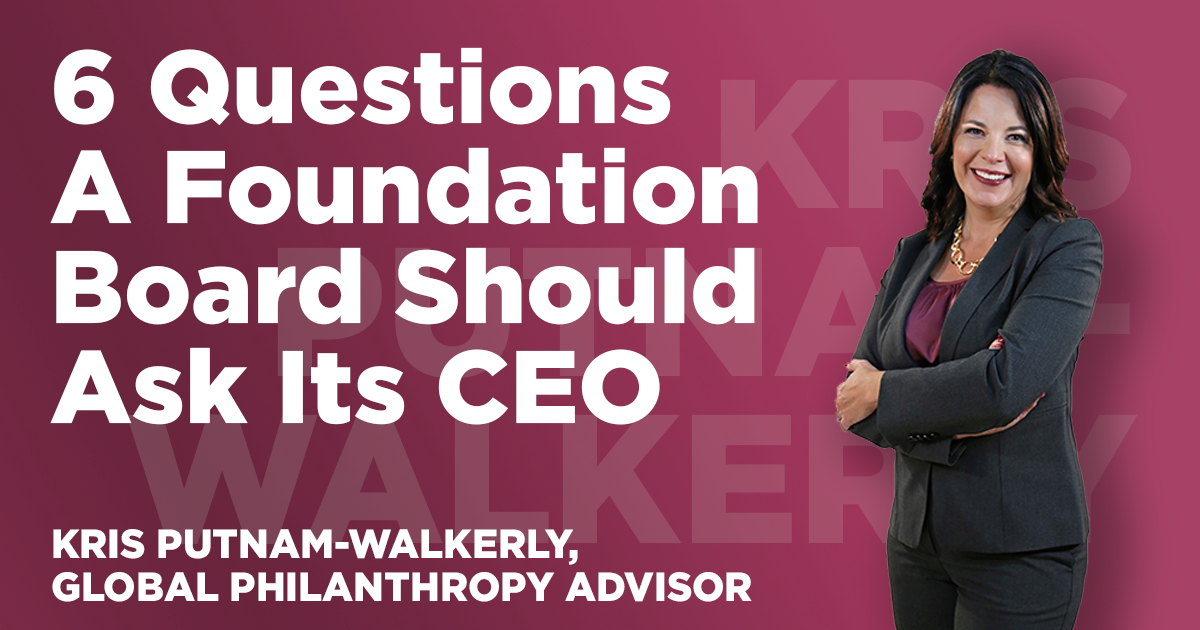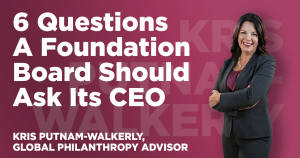A board member’s job includes staying focused on the big picture.
Serving on the board of a philanthropic foundation isn’t just about approving grants. It’s about being a good steward of resources and sharing responsibility for the foundation’s impact. Too often the focus tends to be on board meeting preparation and the efficiency of these meetings. Take a moment to break from the routine and consider asking your foundation CEO these questions to help the organization focus on the big picture.
1. How does this fit within our strategy?
Let’s say your CEO announces, “We’re going to engage in a county-wide campaign to increase public transportation.” That sounds like a great idea, right? Who could be against public transportation? That’s not the real question — the question needs to be “why?” Asking “why” is not implying that an idea is bad — it’s getting to the substance of why your foundation must specifically be involved in this work. How does it fundamentally help meet your mission? What is the documented strategy where this work fits? Asking “why” helps your CEO and staff revisit the overall purpose of the work and keeps you focused on the long game.
If you don’t have clarity on your strategy, then it’s easy to get lost on what I call the bandwagon byways — all the shiny philanthropic objects that come flying at you: equity, trauma-informed care, emotional intelligence, collective impact, etc. These are all important, but you need to examine them against your strategy and see whether they will help you get to your desired future state. And if you have no strategy, you need one.
2. What’s our progress on our strategic plan?
When was the last time you looked at your foundation’s strategic plan? Do you know how to locate it? If your answers to those two questions are “I don’t know” and “Nope,” then you need to talk with your CEO. There’s a lot of work during the run-up to quarterly board meetings, but often a large break in communication and thinking in between. Strategic plans should be living and present. At every meeting, you should be looking at your goals, strategies and accomplishments and be able to say, “Here’s where we are, and here’s where this new effort fits into it.” Every foundation’s strategic plan needs to be relevant and present so that everyone is aligned and working toward the same vision.
3. How much time do staff spend preparing for board meetings and what does that cost?
I have worked with foundations on projects that absolutely stalled because of an upcoming board meeting. Staff members will say they’re not available for three weeks because they’re preparing. If your board meetings are held four times a year, you’re wasting a total of 12 weeks simply doing meeting prep. That’s three months! And it doesn’t even include the recovery period when staff are exhausted and unproductive, trying to get through a backlog of 300 emails. If you, as a board member, were to calculate the hourly rate of that meeting prep and add 25% for benefits, you would be horrified to understand how much it costs to pull off a board meeting.
The point is to figure out what the board really needs to know. Ask your CEO what changes you can make internally to make meetings more efficient and a better use of time. Maybe the staff has authority to approve grants up to a dollar amount outside of board meetings. Is it necessary to print out each grant application along with a one-page summary, a paragraph summary and a one-sentence summary? Reduce the writing, copyediting, printing and more.
4. What can we do to reduce the cycle time of grantmaking?
In today’s constantly changing environment, it’s becoming even more important for funders to be nimble and responsive. Due diligence remains critical, but you need to find ways to help your foundation streamline the process so you can get more investments to more groups in need. Here are some examples:
Consider rewriting your lengthy grant application to only ask for information you truly need. If it’s not going to help you evaluate an investment, don’t ask for it.
Think about the practices you’ve created to be a good steward that might be increasing time spent unnecessarily. For example, site visits are a great way to see work firsthand, but you aren’t required to do them and they certainly don’t need to take an entire day. Try inviting all applicants to have a meet and greet with the CEO and board members instead.
Letters of intent were created as a way to avoid too many grantees from filling out the long application, but many have now just ended up adding yet another step in a lengthy grantmaking process. If it’s not adding value, remove it.
Talk to your CEO about approving grants on a rolling basis instead of quarterly. The William and Flora Hewlett Foundation makes grants on a rolling basis up to and including $1M with only president — not board — review, allowing them to be both responsive and timely in meeting needs.
5. Are we taking enough risks?
Foundations need to be comfortable with risk. This doesn’t mean to forgo due diligence, but it does mean a recognition that not all investments will have the expected result. But in order to support innovative ideas and create transformational change, funders should be willing to take prudent risks. Create an analysis to put your idea through each time to evaluate the risks: cost/benefit, whether it fits strategically with what you’re trying to do, how hard it would be to implement, etc. A wonderful resource to better understand the risk to spur innovation in this field scan, Fostering Innovation in Philanthropy.
6. How can we be more helpful to you?
One of the best ways to find out how to support your CEO is to simply ask. Foundation CEOs are often trying to make it easy on the board and hesitate to let them know anything is wrong. Staff are so busy keeping the balls in the air that they don’t think about ways the board could help.
There are plenty of ways for board members to provide support outside of the quarterly board meeting. Maybe your foundation is getting involved in a collaborative project that has become political and created disagreement—show up at the local City Council meeting to share your support. What doors could you open for your foundation simply by introducing your CEO to 10 people? Take opportunities to anticipate what might be different in the future of your community and anticipate needs. Do you foresee that a large local industry may move or shutter operations? Will a boom in births mean a future strain on community schools? What can your foundation do now to prepare for that?
Many board members are concerned about pushing back on the ideas that foundation staff and CEOs create. Yes, you should trust your CEO and staff and their knowledge of what’s happening on the ground. But it’s important for board members to help foundations pause and ask why they’re doing the work so you can all be better connected to the mission and remember what you’re trying to accomplish together. As a board member, your job is to be a good steward of resources and share the responsibility of the foundation’s work. Don’t forget that sometimes that means asking the tough questions.
This article was originally written for and published by Forbes.
© 2019 Kris Putnam-Walkerly. All rights reserved. Permission granted to excerpt or reprint with attribution.
__________________________________________________________________________
About Kris Putnam-Walkerly
I’m a global philanthropy expert, advisor and award-winning author. I help ultra-high net worth donors, celebrities, foundations and Fortune 500 companies dramatically increase the clarity, speed, impact and joy of their giving. I’m the author of Confident Giving: Sage Advice for Funders, was named one of “America’s Top 25 Philanthropy Speakers”(along with U2’s Bono!), I write about philanthropy for Forbes.com, Alliance Magazine, De Dikke Blauwe and am frequently quoted in leading publications such as Bloomberg, NPRand WSJ.
Whether you are just getting started in philanthropy, want to refresh your giving strategy, or need to catapult yourself to your desired future, I can help. Let’s talk! Call me at +1-800-598-2102 x1, email me at kris@putnam-consulting.com or schedule a call.
__________________________________________________________________________
“Kris brings a rare and unique perspective to her philanthropy consulting that makes it easy for us to bring our best selves to our work as grantmakers. It’s clear that she has invested in her own knowledge and capacity and has shared that with our field. In addition, she holds herself and her practice to the highest standards of integrity, honesty, clear thinking and creativity, and she helps our organization do the same.”
Ronn Richard, CEO, The Cleveland Foundation
Want to learn more? Visit my website to learn how I help funders, access free resources, and read client testimonials.








